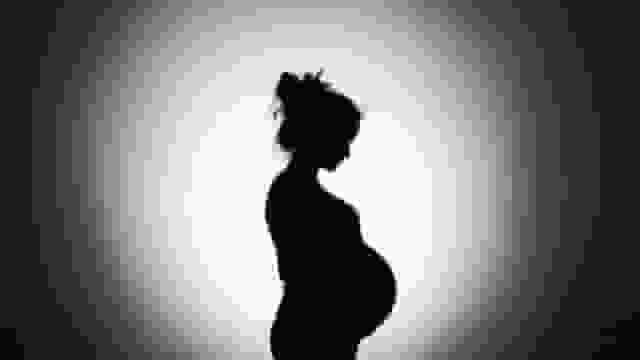According to recent figures, the nation experienced its first major uptick in the abortion rate in more than three decades ahead of a momentous Supreme Court decision on the fate of Roe vs. Wade.
According to the Guttmacher Institute, a pro-abortion research organisation, the rate increased by 7% from 13.5 abortions per 1,000 women and girls of childbearing age in 2017 to 14.4 in 2020.
In all, 930,160 abortions were performed in the United States in 2020, up 8% from 862,320 in 2017.
“This is the first time we’ve had an increase since 1990,” said Rachel K. Jones, a principal research scientist at the Guttmacher Institute and the study’s lead author.
Both sides of the abortion debate believe Guttmacher’s findings, which were compiled from state health departments and individual providers, to be the most accurate national statistics.
The last time the national abortion rate increased significantly was in 1988 when it was 27.3 per 1,000 women of childbearing age. Since then, the figure has been steadily decreasing, with a minor increase in 2007. The overall number of abortions in the United States has also decreased.
The authors of the report said that the increase could be due to a combination of factors, including increased private funding to support abortion access and extended Medicaid coverage for the procedure in some states. The group also believed that Trump’s changes to Title X family planning and contraception programmes may have resulted in an increase in unwanted pregnancies.
The national birth rate fell by 6% over the same three-year period, resulting in 3.6 million births in 2020. Because the decrease in births was significantly greater than the increase in abortions, the researchers concluded that fewer people became pregnant and a greater proportion of those who did had abortions.
The information is likely to exacerbate tensions surrounding the Supreme Court’s next abortion ruling, which is due early next month. A draught copy of the ruling, obtained by Politico last month, included five votes to overturn the 1973 Roe decision.
The draught, which may change from the final ruling, reinstated state power over abortion laws. Several states have already passed legislation making abortion illegal in many if not all, cases.
“The demand for abortion is growing at the same time that the Supreme Court is poised to overturn Roe vs. Wade, allowing states to prohibit abortion,” Jones said.
According to her, the new numbers suggest that the demand for abortion continues to be high.

She explained, “It means individuals are getting the healthcare they want and need.”
The report “shows that there is, and will always be, a need for abortion care in the United States,” said Lisa Matsubara, vice president of policy and general counsel of Planned Parenthood Affiliates of California.
The numbers also appear to reflect the reality that “people’s economic situations have radically changed” during the pandemic, according to Jessica Pinckney, executive director of Access Reproductive Justice, which funds abortion and other reproductive healthcare.
“Their healthcare situation has changed dramatically,” Pinckney noted. “Every one of these things is a factor.”
Other concerns raised by anti-abortion activists include: The reasons for changes in abortion rates are complicated, according to Jonathan Keller, president and chief executive of the California Family Council, but “you’re starting to see groups like Planned Parenthood and others becoming a lot more aggressive and outspoken in the ways that they are directly promoting abortion.”
“I believe there was a backlash, or a counter-reaction, to Donald Trump’s win,” Keller remarked. “If you increase supply, you’re probably going to increase the number of abortions that are done,” she says, referring to places like California that want to extend abortion access.
According to Susan S. Arnall, vice president of legal affairs for the Right to Life League, the data “show that there is no lack of access” to abortion in California.
While the numbers revealed an increase in the number of abortions across the country, the reality differed dramatically by state.
California saw a greater increase than the rest of the country, with 19.2 per 1,000 women in 2020, up 17 per cent from 2017. In 2020, 154,060 abortions were performed in the state.
The California Department of Public Health does not collect abortion statistics; the state’s figures are based on abortion provider surveys.
The study’s authors say they want to look into some of the states’ substantial shifts in abortion rates in the coming months.
The rate in New York increased significantly between 2017 and 2019 but then fell the following year, possibly as a result of the COVID-19 epidemic, which affected the city severely in the early months of 2020.
Over three years, the rate in Illinois increased by 25%, because it permitted Medicaid to utilise state funds to pay for abortions and because citizens from Missouri, where abortion access is more limited, crossed state boundaries.
Over the same period, Missouri’s rate dropped considerably, confirming the argument of pro-abortion activists that patients seeking abortions will cross state lines if they can.
Read more:-
- The Future of Social Security Is Being Questioned by Lawmakers
- Inflation in the United States Has Soared, Putting Additional Pressure on Vice President Joe Biden
- The Coin Center Has Filed a Lawsuit Against the Us Treasury and the Irs for Suspected Financial Surveillance
Guttmacher’s figures only include doctor-assisted abortions, not self-administered abortions, such as those in which a woman receives pregnancy-ending medicine without the help of a healthcare provider.


